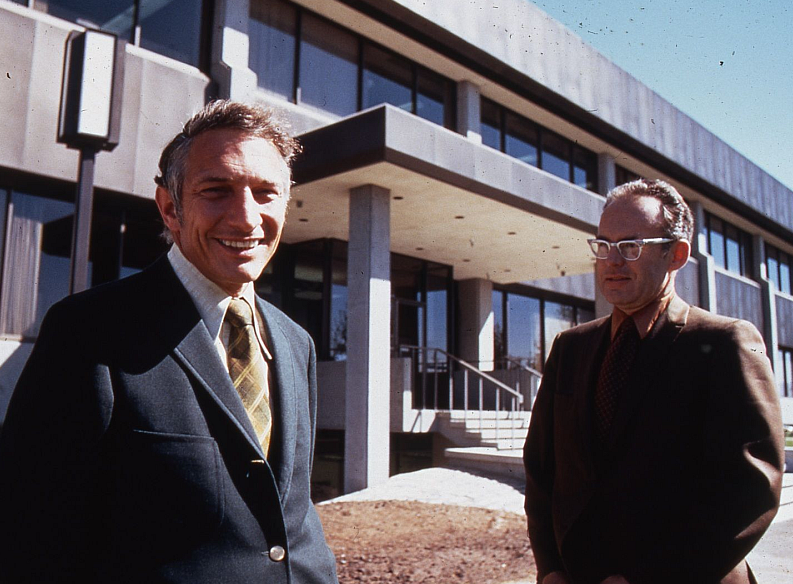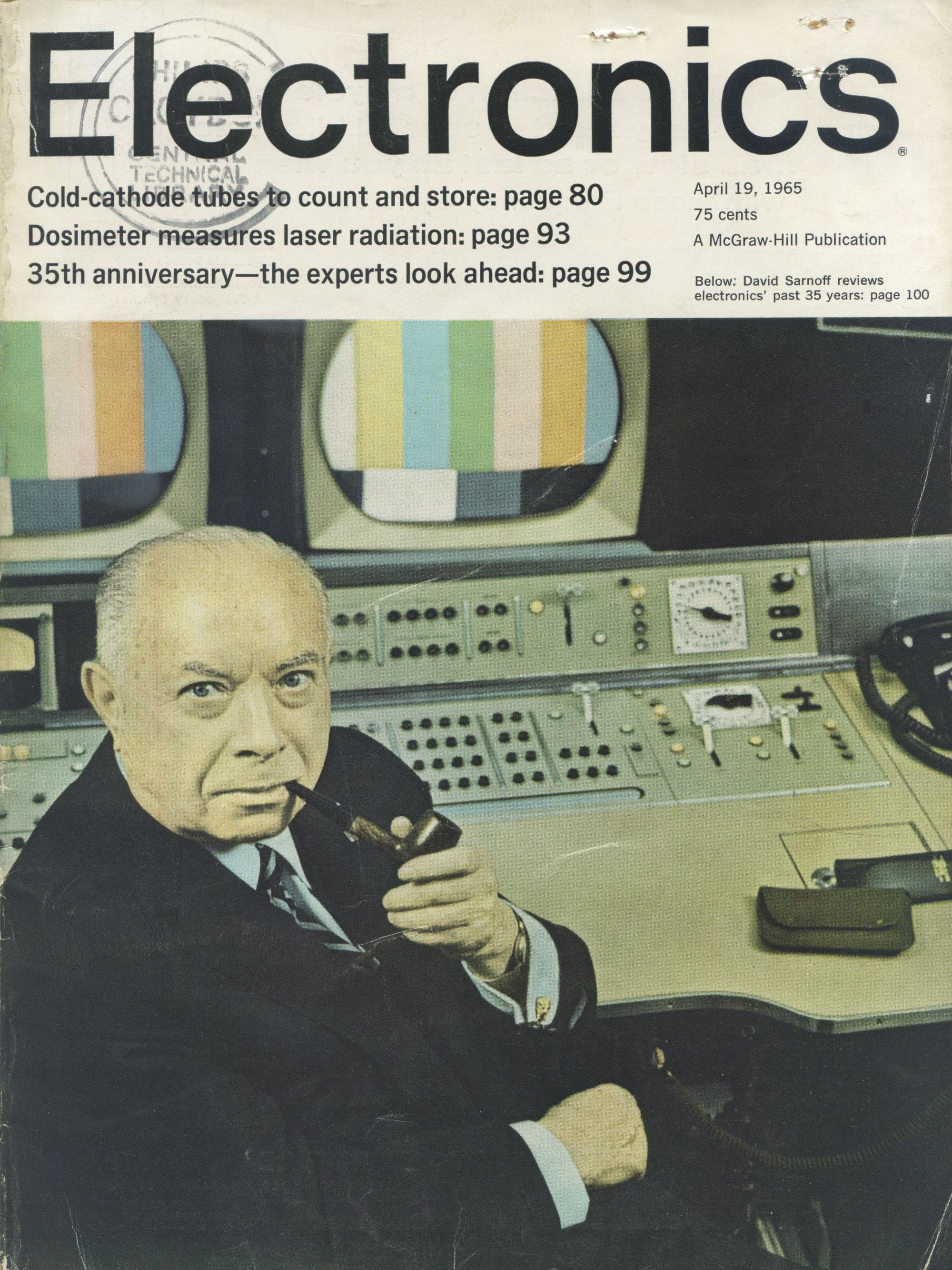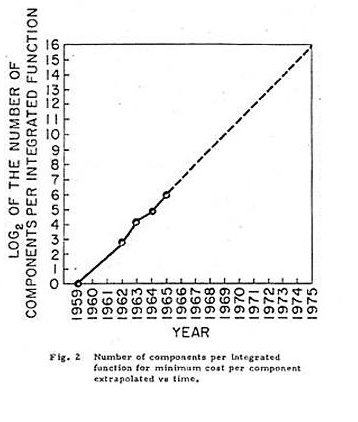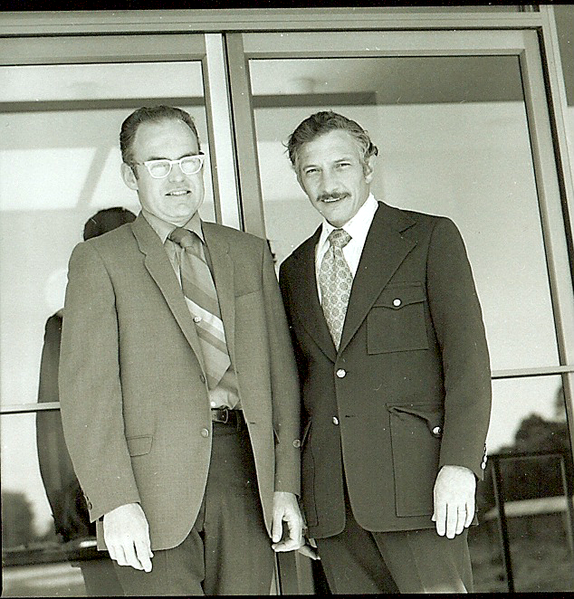
🖥️ Gordon Moore foresaw the future - and created it
With Moore's law you can predict what computers can do and help create the future.
Share this story!
At an industry conference in 1965, Bob Noyce got the audience to gasp collectively. Noyce was one of the inventors behind the integrated circuit, the microchip, made of silicone, which gave Silicon Valley its name.
He needed to shock the audience somehow and take back the initiative that Fairchild Semiconductor had begun to lose to Motorola.
Although necessary, it was a very daring move.
What Noyce announced was that Fairchild would dramatically lower the price of integrated circuits. Even lower than it cost to manufacture them.

Selling something for a price lower than it costs to produce them is usually not a winning strategy, but Bob Noyce knew something that the others didn’t.
He knew that the cost of manufacturing the circuits would soon drop, so that they once again would make a profit on them.
Maybe others also understood that, but Noyce knew when the cost would fall and his price cut was therefore not a wild guess. It was a calculated risk.
What Bob Noyce knew, which the audience did not, was what is today called Moore's Law.
Then, in 1965, the law did not yet have a name, because it had just been formulated and no one knew that it could predict the future.
The reason Bob Noyce knew about Moore's Law was that he worked with its creator, Gordon Moore.

An article in the magazine Electronics becomes the world's most famous prediction
The same year, the magazine Electronics asked Moore to write an essay about the future of integrated circuits. Little did they expect, or Moore for that matter, that it would become the most famous and accurate prediction ever. (And it wasn't the headline that made the article famous: "Cramming more components onto integrated circuits.")
What Moore was trying to convey in the article was that the circuits would be cheaper:
"I was just trying to get the idea across that these complex circuits were going to show the cost of transistors and other components much cheaper," he said later.
To show that, he examined how many transistors the circuits that they manufactured had contained and what they cost, and put it into a graph.

The graph showed that since 1959, when Fairchild came out with its first integrated circuit, the number of transistors had doubled each year, without the cost of the circuit increasing. 1, 2, 4, 8, 16, 32 and in 1965, the number of transistors was up to 64.
Moore's law shows exponential growth
It was not that part of the graph that became Moore's law; it was the continuation of it. He drew another ten years, until 1975, and predicted that the number of transistors would continue doubling without the cost increasing.
“Certainly over the short term this rate can be expected to continue, if not increase. Over the longer term, the rate of increase is a little more uncertain, although there is no reason to believe it will not remain nearly constant for at least 10 years."
When something is exponential, the numbers after a few doubles become huge. Already in 1975, Moore stated in his article the number of transistors would be 65,000. The actual number, in 1975, was 65,536. Since 1971, the number of transistors has doubled every two years. In 2017 it was 19.2 billion.
Understanding Moore's Law is understanding the future
The cool thing is not the accuracy of the prediction, but what you can predict if you understand what it means.
Michael Malones describes the article and graph in the Intel Trinity:
“... if they were astute enough to study the line on the graph and understand its implications, it would have made their hair stand on end… and shown them the path to becoming billionaires."
If you had read Moore's article in 1965 and truly understood what it meant and acted and invested accordingly, then you would have become the world's richest person.
It is impossible to predict the future, but by understanding Moore's law and exponential growth, you get as close as you can.
Everything digital we have around us is possible thanks to this. Consumer electronics, supercomputers, home PCs, mobile phones, internet, smartphones, big data, augmented reality, drones, and virtual reality.
You can't exactly predict the future, but you can understand it well enough to be a part of creating it
By understanding Moore's law you can't predict precisely what gadgets we’ll see, but you can understand what is possible to achieve.
You couldn't know in 1990 that Apple would launch an iPhone in 2007 and that billions of people a few years later would walk around with the equivalent of a supercomputer in their pockets. But you could understand that something similar was possible and with that knowledge, you can help create the future.
It was also that understanding that enabled Bob Noyce to lower the price before the cost had dropped. He knew he would not have to wait ten years, but that the cost of the same product within two years would be half of what it was. The competitors did not understand that, and kept their prices.
Is Moore's Law a prediction or a self-fulfilling prophecy?
It has been debated whether Moore's law is a prediction or a self-fulfilling prophecy. I would say it is both and, but more self-fulfilling prophecy than prediction.
It was, and is, Moore's own company, Intel, that more than anyone else has made Moore's law come true. They have constantly been pushing development forward and, about every two years, come out with a twice as powerful product.
It shows that development and progress are not automatic. Someone has to create it. Intel was, and still is, hard-pressed to keep Moore's law alive.
Gordon Moore showed in his article what was possible. At Intel, he made sure it happened.

By becoming a premium supporter, you help in the creation and sharing of fact-based optimistic news all over the world.


